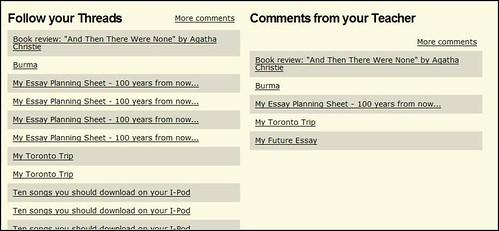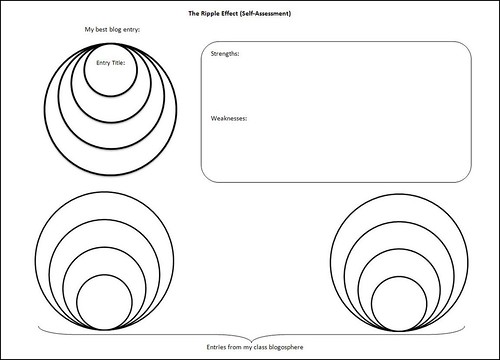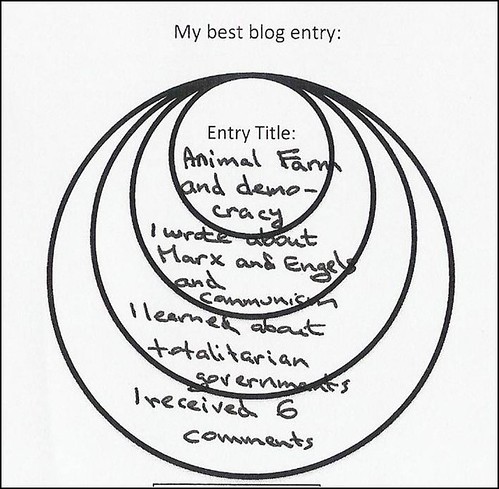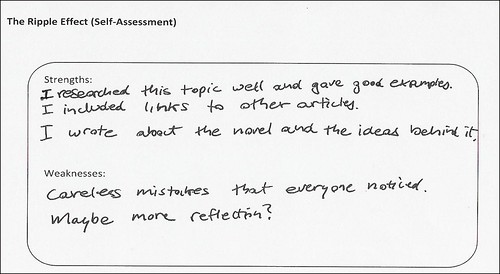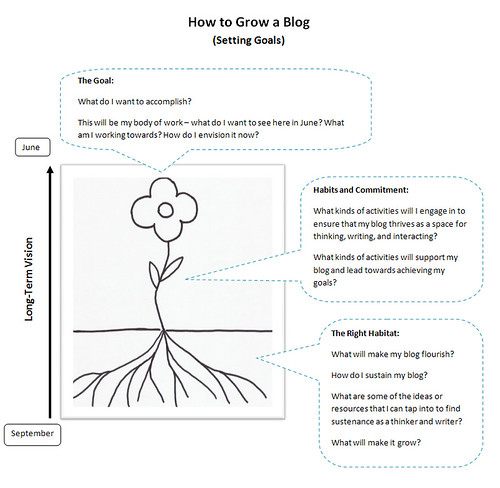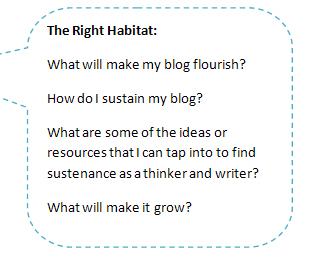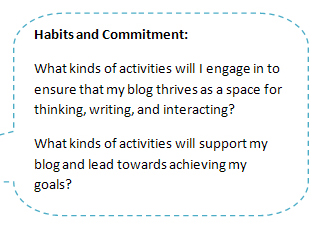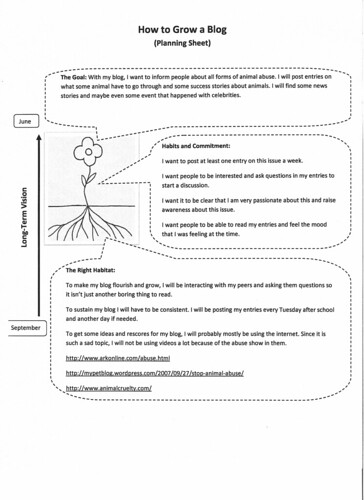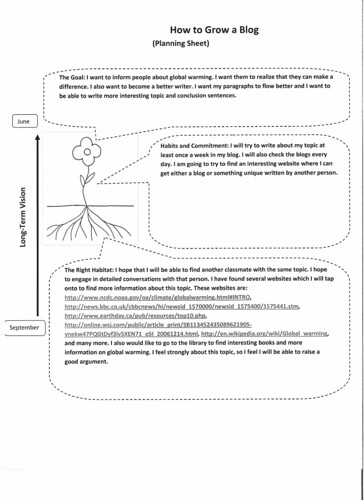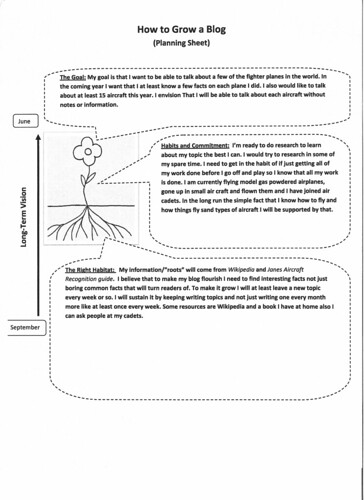The Embedded Practitioner
My first entry on this blog, posted on February 22, 2005, marked the beginning of my doctoral research on blogging communities. I was interested in what happens when a group of grade eight students is given a place where they can engage as writers and move away from the "schooliness" of traditional class work. When I started, I really did not know what to expect. I had high hopes, but no preconceived notions or expectations. And now, three years later, the research is done, and I am very happy to report that I have successfully defended my PhD thesis. It was a fascinating journey. I learned a lot about writing in online environments, about student interactions online, and about fostering student engagement in online spaces. However, one of the most personally relevant findings of my research was the impact that it had on me - the teacher-researcher.
During my defense, I focused on all the key findings of my research, but paid particular attention to my conclusions on teacher professional development. My research taught me a lot about the role of the teacher in an online class community of writers. At my defense, I used this painting by Caravaggio, the Italian Baroque master, to elaborate on what my research findings suggest about teacher professional development:
 Caravaggio, The Taking of Christ
Caravaggio, The Taking of Christ
Before I explain why I chose this painting, let me first elaborate on Caravaggio as he himself is an important figure to consider, an important role model for 21st century teachers. Caravaggio's work was revolutionary. He was an innovator in his time who rejected established conventions. Instead of painting epic scenes with masses of people and religious symbolism (as was the established norm), he chose to focus on the personal struggles and experiences of his subjects. He chose to highlight the individual. The subjects he chose were mere mortals, representatives of the working class - the poor, humble, ordinary people of his time. The faith he depicted in his work was the faith of the simple, uneducated masses, not the faith of the grand Biblical narratives. Caravaggio focused on what he saw around him. His paintings feature wrinkled, aged faces, torn clothing, and unadorned, simple, often neglected interiors. Truth, in other words, truth as he saw it around him on a daily basis, was more important to him than conventions.
So, what does all of this have to do with teaching in the 21st century?
That painting by Caravaggio has became for me a metaphor that I like to use to explain the role of the teacher in a blogging community. Since I'm using it as a metaphor, I am interested only in its visual appeal - the placing of the subjects, the light that penetrates the scene, and the fact that the man carrying the lantern on the right side of the painting, the one who looks with interest over the heads of the two Roman soldiers, has been identified as Caravaggio's self-portrait. (Caravaggio is well-known for inserting his self-portrait, inserting himself, so to speak, into his paintings.). I believe that, much like Caravaggio in this painting, a teacher in a blogging community should enter the context that gives rise to his or her work. Caravaggio portrays himself as one of the characters. He becomes implicated in his painting. He is both subject and artist ... and that is why I think this painting is so relevant to my research and can help convey the redefined character of teacher presence in online communities. It makes visible some key implications of my study in the field of teacher professional development.
What this painting says to me is that we can gain a better understanding of our classrooms-as-communities if we immerse ourselves in them. In the manner of Caravaggio, teachers should weave their readerly, personal voices into the fabric of classrooms-as-communities. What my experiences illustrate, and what the painting metaphorically emphasizes, is that teacher professional development in the 21st century requires that we look closely at how to most effectively embed ourselves in our practice and in the experiences and interactions of our students. Professional development in the networked world requires that we look closely not only at what we do as educators but also at how we are embedded in educational contexts. Much like Caravaggio, we have to narrate ourselves into existence through participation in our classrooms in a way that is non-authoritarian, readerly, and conversational.
Much like Caravaggio in this painting, we need to be present in our classrooms as providers of light. Our guidance is needed and important. But, too often, our guidance becomes authoritarian and fails to take into account the voices of our students. We don't often peer questioningly over the shoulders of our students. Instead, we impose the content and pre-define the learning trajectories for our students. Why don't we take the time to just listen and observe once in a while? Those of us who give our students the freedom to define themselves through their work in classroom communities know how much we can learn by listening and observing. We should not be afraid to step down from behind the lectern and move to the edge of the community, where we can redefine our presence as that of a participant, as one of the voices, not as the voice that dominates, demands, and evaluates. What Caravaggio's painting reminds me of is that I can be just as helpful as a facilitator if I engage from the sidelines and do not dominate the community as its focal point. Let student voices remain in the centre, let them be the focal point of the community where they interact, engage, and learn.
This reconfigured approach requires a difficult shift in our understanding of classroom practice. It requires that we accept a new dethroned position and become embedded practitioners - embedded in the classroom interactions as readers and participants, not evaluators and overseers.
That brings me to another important point: What's Next?
My research has led me to some important and timely questions about teacher professional development - questions that I hope to be able to work on in the near future:
- How do we prepare teachers to teach 21st century learners whose lives are based on rich interactions in multiple online environments?
- How do we help new teachers move away from what Marshall McLuhan once called the "imposing of stencils" and adopt a practice of probing and exploration?
- How do we help new teachers acquire the courage to transform their classrooms into communities of learners and transform themselves into participants who can embed themselves in those communities?
My study and experience provide some answers, some of which I addressed on this blog in the past, but they are just starting points that will need further attention and elaboration. I believe that this process begins with opening ourselves up to the language of possibility and recognizing teachers whose work in the classroom can help us redefine not only our own classroom presence but also our notions of professional development. We need what Paulo Freire calls "curiosity as endless questioning." He describes it as
movement toward the revelation of something that is hidden, as a question verbalized or not, as search for clarity, as a moment of attention, suggestion, and vigilance ... there could be no creativity without the curiosity that moves us and sets us patiently impatient before a world that we did not make, to add to it something of our own making (Freire, 1998, pp.37-38).
In other words,
[...] there is no such thing as teaching without research and research without teaching. One inhabits the body of the other. As I teach, I continue to search and re-search. I teach because I search, because I question, and because I submit myself to questioning. I research because I notice things, take cognizance of them. And in so doing, I intervene. And intervening, I educate and educate myself. I do research so as to know what I do not yet know and to communicate and proclaim what I discover (Freire, 1998, pp.35).
Coda
Recently, Al Upton, an award-winning teacher from Adelaide, Australia whose work I've admired for a very long time, was forced to close his classroom community that has proven over the years to be of immense benefit to his students. He was forced to disable the classroom community by the Department of Education and Children’s Services in South Australia despite the fact that he used it to teach his students about online safety and received parental permission to carry out his project. The Department of Education is worried that some material on his class blog may put the students at risk of being identified by outsiders.
Al and I never met and we never corresponded, but I've been following his work for years and have always found it innovative and inspiring. In my opinion, Al is an embedded practitioner, someone who listens, observes, and is constantly searching for and researching new ways to improve himself and bring greater educational value to his classroom practice. I hope that he will soon regain his freedom to bring the world into his classroom and the classroom out into the world.
Works Cited:
Freire, P. (1998). Pedagogy of freedom. Ethics, democracy, and civic courage. Rowman & Littlefield, New York.
